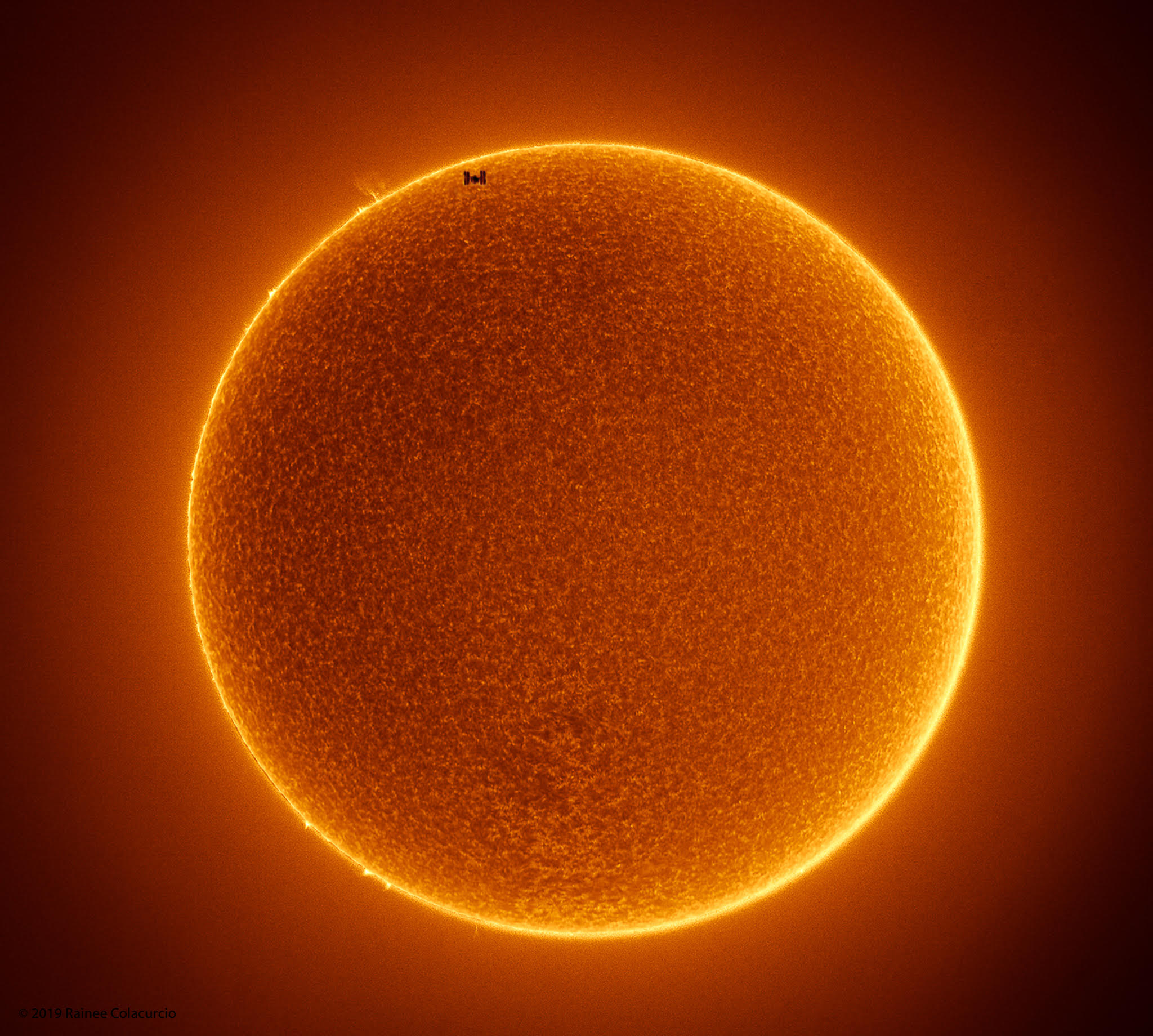Something’s Missing in This Stunning Photo of Space Station Passing in Front of the Midday Sun

Swirling 250 miles (400 kilometers) above Earth, the International Space Station (ISS) completes a full orbit of our planet every 90 minutes or so. You can see it with your naked eyes at night (at least, you can see a white dot of steady-cruising light), but spotting the station during the daytime — as photographer Rainee Colacurcio did in the fiery photo above — requires a bit of technological assistance.
"My go-to setup is a dedicated hydrogen-alpha solar scope," which is a special telescope for observing the sun, Colacurcio told Live Science in an email.
The above photo, featured recently on NASA's Astronomy Picture of the Day blog, is a composite of several exposures of the sun stitched together with Photoshop and various other editing programs. Using a website called transit-finder.com, Colacurcio calculates exactly where and when the ISS will appear to pass in front of the sun near her location, then spends about an hour before the event focusing her solar scope on our local star. With a camera attached to the scope, she films for about 10 minutes as the satellite crosses the sun's gleaming face.
While the ISS sits like a bow on the top left corner of the sun's head in the new picture, no visible sunspots (dark splotches of intense magnetic activity) appear. According to NASA, that's because the sun is in the midst of a solar minimum, which is a period of low solar activity that occurs every 11 years or so.
While lower-than-normal activity is expected, both the current solar minimum and the previous one produced hardly any sunspots, NASA wrote, which is a bit unusual. Nobody really knows why — but at least it makes for some great photos.
- The 12 Strangest Objects in the Universe
- 15 Amazing Images of Stars
- 9 Strange Excuses for Why We Haven't Met Aliens Yet
Originally published on Live Science.
Sign up for the Live Science daily newsletter now
Get the world’s most fascinating discoveries delivered straight to your inbox.

Brandon is the space/physics editor at Live Science. His writing has appeared in The Washington Post, Reader's Digest, CBS.com, the Richard Dawkins Foundation website and other outlets. He holds a bachelor's degree in creative writing from the University of Arizona, with minors in journalism and media arts. He enjoys writing most about space, geoscience and the mysteries of the universe.










